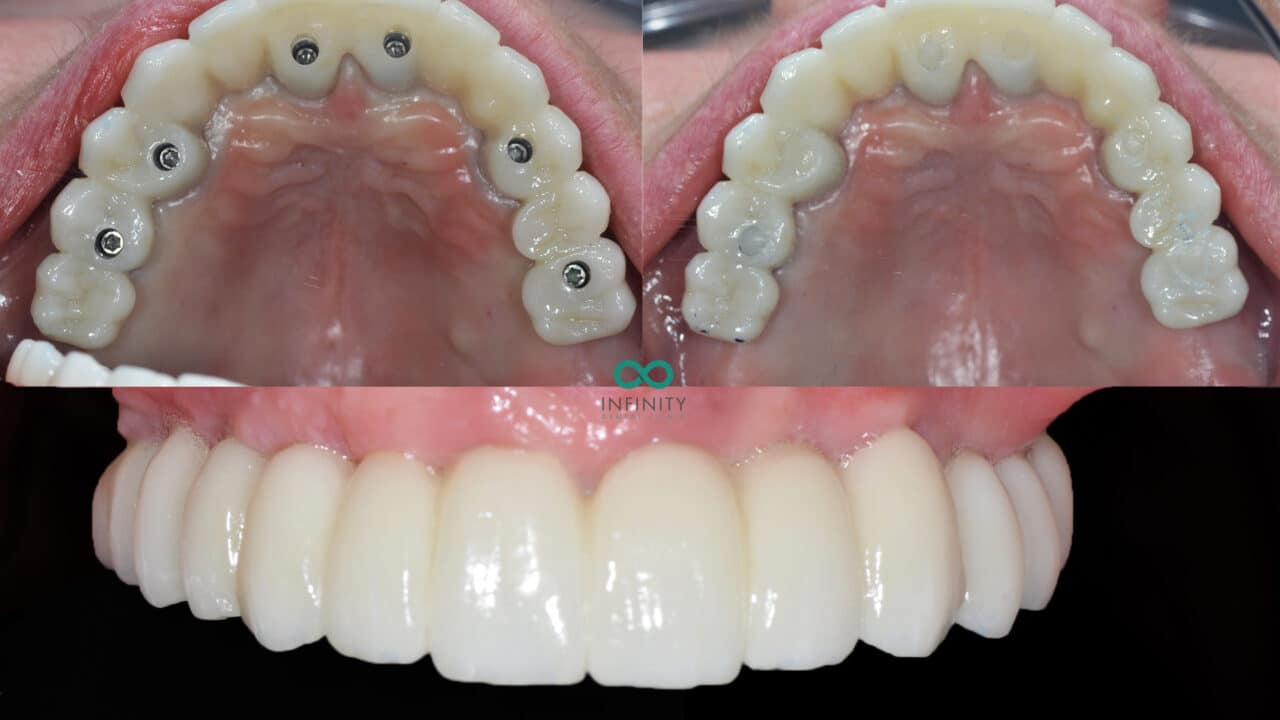Fascination About Dental Sense
Fascination About Dental Sense
Blog Article
6 Simple Techniques For Dental Sense
Table of ContentsThe Buzz on Dental SenseSome Known Factual Statements About Dental Sense Little Known Facts About Dental Sense.The smart Trick of Dental Sense That Nobody is Talking About
are clinical devices surgically dental implanted right into the jaw to bring back an individual's capacity to chew or their look. They give assistance for artificial (fake) teeth, such as crowns, bridges, or dentures. When a tooth is lost as a result of injury or condition, a person can experience difficulties such as fast bone loss, malfunctioning speech, or adjustments to eating patterns that cause discomfort.Dental implant systems include an oral implant body and oral implant abutment and may additionally consist of an abutment addiction screw. Dental veneers cost. The oral implant body is surgically inserted in the jawbone in area of the tooth's origin. The oral implant joint is usually connected to the implant body by the joint addiction screw and extends via gums into the mouth to support the affixed artificial teeth
(https://myspace.com/dentalsense1)Framework of The Dental Implant System choosing oral implants, speak with your oral service provider regarding the possible advantages and dangers, and whether you are a candidate for the procedure. Things to consider: Your overall health is an important consider determining whether you are a good candidate for dental implants, the length of time it will take to recover, and for how long the dental implant might remain in location.
Smoking cigarettes might impact the healing process and decrease the long-lasting success of the dental implant. The healing process for the implant body may take numerous months or longer, throughout which time you generally have a temporary joint instead of the tooth. the oral implant procedure: Very carefully comply with the oral health directions given to you by your oral company.
The 3-Minute Rule for Dental Sense
Implant failing can cause the demand for one more operation to take care of or replace the implant system. Restores the capacity to eat Recovers aesthetic look Helps maintain the jawbone from shrinking as a result of bone loss Protects the health of the bordering bone and gum tissues Helps maintain nearby (neighboring) teeth steady Boosts quality of life Damage to surrounding all-natural teeth during implant placement Injury to the surrounding cells throughout surgical procedure, such as sinus perforation Injury during surgery (for instance, fracture of surrounding jawbone) Insufficient function, such as seeming like the teeth do not bite together generally A sensation that the tooth hangs or twisting in place resulting from an abutment screw loosening up Implant body failure (looseness of the implant body) as a result of systemic infection, which may be most likely in clients with unrestrained diabetes mellitus as a result of local infection in bone and gums supporting the implant body due to delayed recovery, which might be more probable in individuals who smoke Problem cleansing the periodontals around the dental implant, leading to poor oral health Unattended periodontal condition Post-surgical pins and needles because of nerve impingement or damage Constantly inform healthcare providers and imaging professionals that you have dental implants prior to any magnetic vibration imaging (MRI) or x-ray treatments.
FDA is not conscious of any unfavorable events reported for MRI or x-ray treatments with oral implants. Oral implants systems are generally made of products that follow worldwide agreement criteria of the International Organization for Standardization (ISO) or ASTM International. These criteria have details of what makes a safe product.

A Learn More Here dental implant is a structure that changes a missing out on tooth. With screw-like gadgets, the doctor inserts an implant right into the jawbone, and it acts as an anchor for a synthetic tooth, called a crown. A device called a joint links the artificial tooth to the oral implant. The crown is customized to fit the individual's mouth and match the shade of their teeth.
Dental Sense - An Overview
Some people are not qualified for dental implant surgical procedure. It is for oral cosmetic surgeons to operate people with: acute illnessuncontrollable metabolic diseasebone or soft cells condition or infectionIf these problems are dealt with, a person can have the surgery. In, oral doctors avoid from operating on individuals with: If individuals with any of the above undergo oral implant surgical procedure, there is a greater risk of the implant failing.

Oral implant surgery is a personalized procedure. Give you time to recover. Connect the message and final crown, bridge or denture.
Next, your doctor will meticulously put the oral implant into your jaw. If your dental implant is near the front of your mouth, your dentist will certainly make a momentary tooth for you to put on till you recover.
Some Ideas on Dental Sense You Need To Know
Your service provider can tell you what to expect in your circumstance. During the recovery phase, your jawbone must fuse to the oral implant. This process, called osseointegration, is critical for security and lasting success. This procedure can take anywhere from 3 to nine months. Sometimes, it may take longer.
Once your implant heals, your dental expert can connect the abutment (small connector blog post) and your final repair (crown, bridge or denture). This usually takes about one hour to finish and may require a 2nd minor surgical treatment. You should not really feel any type of pain throughout your dental implant procedure because your supplier will utilize medication to numb your gums.
Report this page